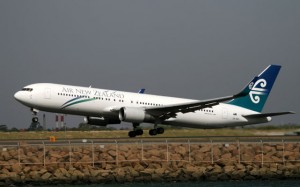Air New Zealand has doubled its profit for the first half of the financial year, but is expecting a weaker second half due to the effects of currency hedges.
The airline recorded a net profit of NZ$56m (A$43.5m), compared to NZ$24m (A$18.6m) for the previous corresponding period. Revenues declined over the six months by 15 per cent to NZ$2.1bn (A$1.6bn) as the airline cut capacity and fares to stimulate demand, resulting in an increase in load factor of three percentage points to 81.6 per cent.
“We worked hard to adapt the business to reflect the lower revenue base. As a result, we achieved an 11 per cent reduction in non fuel operating costs, with all operating costs reduced,” said CEO Rob Fyfe.
He added that the company had a busy year ahead of it. “The next 12 months will be one of the most defining in Air New Zealand’s history. Our competitors will be scrambling to catch up as we introduce a world first long haul experience, continue to evolve our trans-Tasman and Pacific Island operation and introduce more capacity into our domestic jet operation with the arrival of new A320 aircraft.”
In its outlook though, the company warned that if current exchange rates continue that it faces a currency hedging loss of approximately NZ$20m (A$15.5m) during the second half. It also noted that yields and average fares remain “significantly lower” than in previous periods, although overall it expects the business to remain profitable during the second half.















